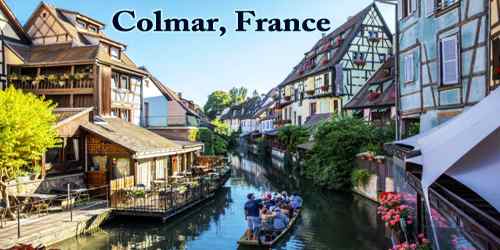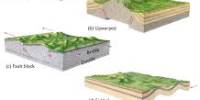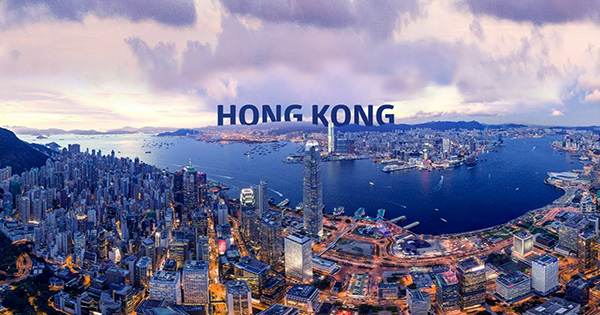Colmar (French: Colmar, pronounced (kɔlmaʁ); Alsatian: Colmer (ˈkolməʁ); German during 1871–1918 and 1940–1945: Kolmar) town, Haut-Rhin département, Grand Est région, northeastern France. Colmar is located 42 miles (68 km) south-southwest of Strasbourg, 10 miles west of the Rhine River, bordering the German frontier and a few miles east of the foothills of the Vosges Mountains. It is on the main railway from Strasbourg to Mulhouse and Basel, Switzerland.
Since the Middle Ages, Colmar has been a prosperous economic and cultural center in the Upper Rhine Valley. The old town boasts many monuments, mansions, churches, and museums that make a trip to Colmar unmissable in this part of Europe.
The city is renowned for its well-preserved old town, its numerous architectural landmarks, and its museums, among which is the Unterlinden Museum, which houses the Isenheim Altarpiece.
Colmar is situated on the Alsatian Wine Route and considers itself to be the “capital of Alsatian wine” (capitale des vins d’Alsace).
The first mention of Colmar is in a chronicle of the Saxon wars of Charlemagne, emperor of the West (800–814). In 1226 Colmar was raised to the status of an imperial town by the Holy Roman Emperor Frederick II and was surrounded by defensive walls. Civil rights were granted to it by Rudolf of Habsburg in 1278. In 1632, during the Thirty Years’ War, it was occupied by Sweden. Louis XIII of France took the town under his protection in 1635; it was later gradually annexed by France during 1648–78.
Between the fourteenth and fifteenth centuries, Colmar had a life quite independent and peaceful under imperial protection and it developed new civic and religious buildings. The city still remained under imperial rule throughout the fifteenth century.
In the second half of the seventeenth century, after several years of Swedish rule, Colmar entered the Kingdom of France, but after 1871 (with the defeat of Napoleon III), the city returned to Germany until World War I. It was then reoccupied by the Germans during the World War II but returned to France at the end of the war.

Colmar is 64 kilometers (40 mi) south-southwest of Strasbourg, at 48.08°N, 7.36°E, on the Lauch River, a tributary of Ill. It is located directly to the east of the Vosges and connected to the Rhine in the east by a canal.
In 2017, the city had a municipal population of 69,105, and the metropolitan area of Colmar had a population of 131,639 in 2016. Colmar is the center of the arrondissement of Colmar-Ribeauvillé, which had 211,312 inhabitants in 2017.
Colmar’s many fountains, ancient churches, and Alsatian Renaissance houses have made it a center of tourism. The Musée d’Unterlinden, formerly a convent, houses the 16th-century Isenheim Altarpiece, the masterwork of the German religious painter Matthias Grünewald. The home of the sculptor of New York City’s Statue of Liberty, Frédéric-Auguste Bartholdi, who was born in Colmar in 1834, is a museum.
The historic center is organized around the Saint-Martin Collegiate Church, a massive Gothic-style sanctuary dating back to the 14th century. The rue des Marchands is bordered with remarkable half-timbered houses from the Renaissance era such as the Pfister House. It leads to the Old Customs House, the former administrative and economic center of town.
A bit further spreads the picturesque Krutenau district where wine producers, market gardeners, and boatmen used to live. With its old houses built on both sides of the River Lauch, the district is therefore nicknamed the Little Venice of Colmar.
Colmar has a sunny microclimate and is one of the driest cities in France, with annual precipitation of just 607 mm (23.9 in), making it ideal for Alsace wine. It is considered the capital of the Alsatian wine region.
The dryness results from the town’s location next to mountains, which force clouds arriving from the west to rise, and much of their moisture to condense and fall as precipitation over the higher ground, leaving the air warmed and dried by the time it reaches Colmar. Summers are warm, while winters are moderately cold.
The Alsatian town is home to one of France’s richest Fine Arts museums: the Musée Unterlinden, renowned for the beautiful Issenheim altarpiece. During the holidays the historic town provides a fairy-tale setting for the popular Christmas market.
Colmar is also a wine-trading center and commands an industrial port zone on the Rhine at Neuf-Brisach. Industrialization, much of it by foreign investors, is comparatively recent and includes precision engineering, along with the manufacture of synthetic fibers and electronic machines. The presence of a large number of Japanese firms led to the opening of a Japanese school in the neighboring small town of Kientzheim. Colmar is a retailing and commercial center where higher education and research activities (notably in the field of agrobiology) have developed.
Information Sources:
















